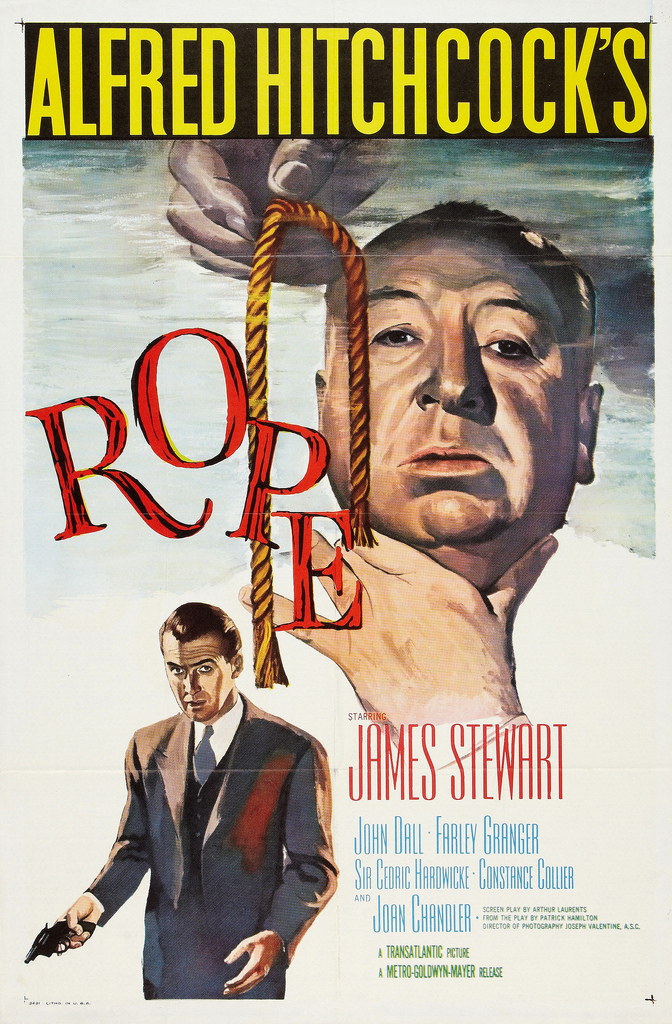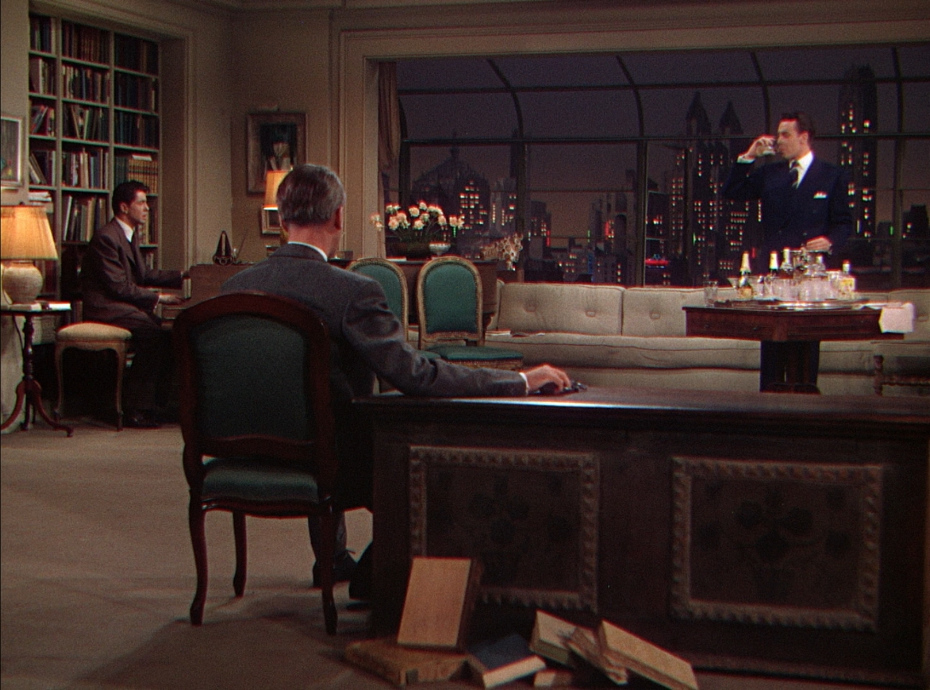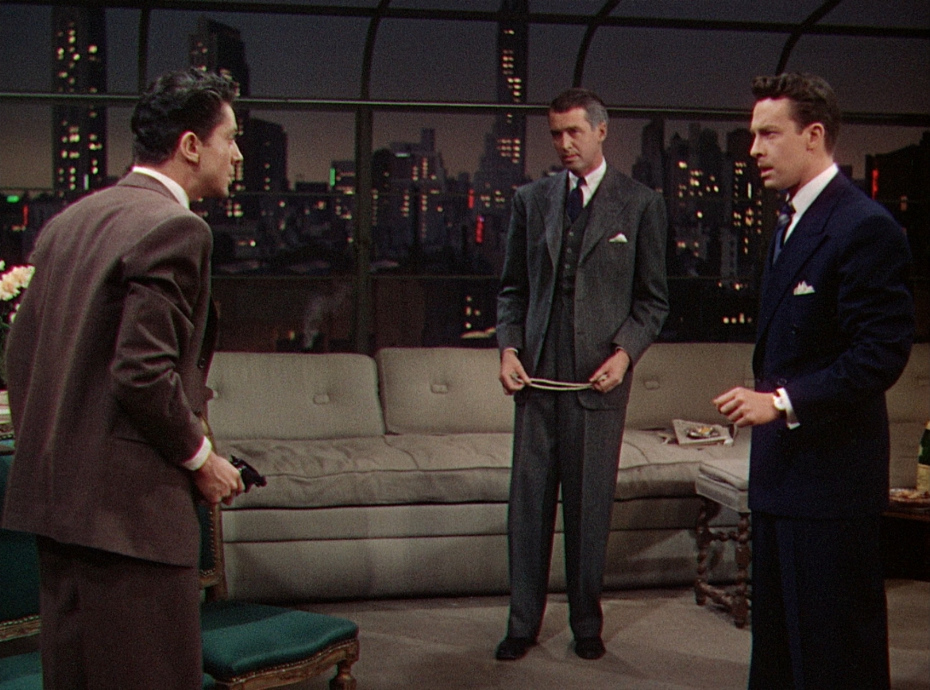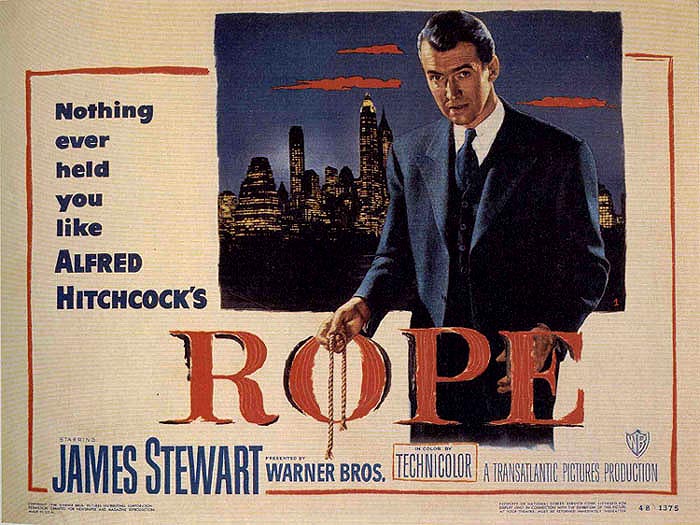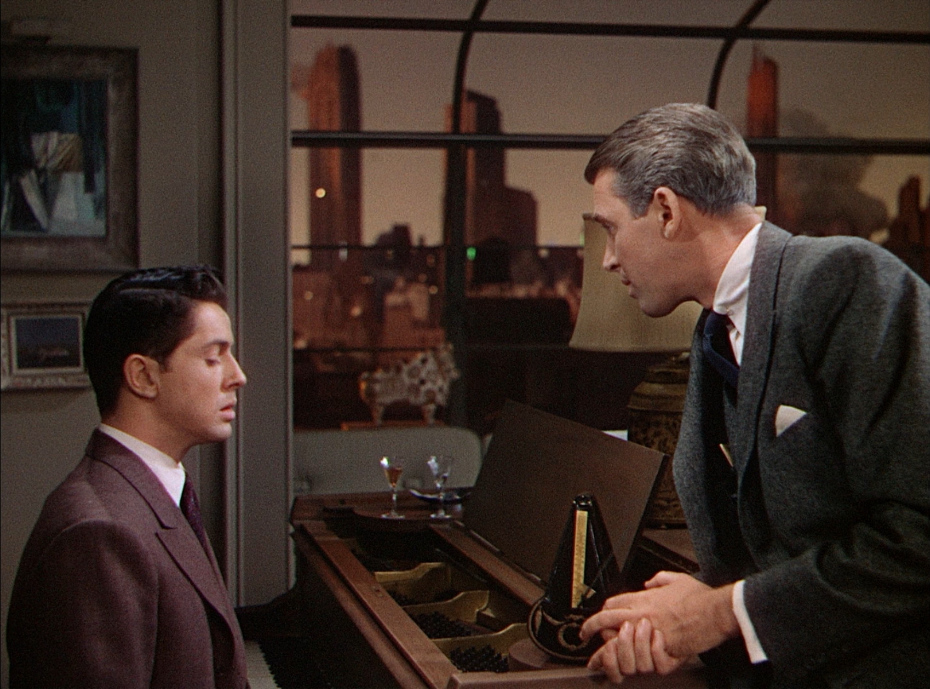Alfred Hitchcock’s Rope is a film that really opens up and comes alive in the new Blu-ray edition. (It does so even more with a good print on a big screen, if you’re ever lucky enough to see it that way.)
Rope is at its most basic level a movie about a set, a magical set with walls that can be moved off screen during shooting to accommodate elaborate camera moves through its spaces, which consist of four rooms in line — a living room, a foyer, a dining room and a kitchen. The camera moves in and around all these rooms except the kitchen, which is only seem through its door.
The film is shot in a series of ten ten-minute takes — the maximum shot length possible for a film camera of the time. The camera moves almost constantly to re-frame elements of the shots for dramatic purposes, since Hitchcock chose not to use editing for this purpose. The cuts between the shots are disguised in various ways to give the impression of the film unfolding as one continuous shot.
There is canny calculation in all this. The elegant movement of the camera through apparently constrained spaces seems magical at first — and the better the print the more magical it seems. But gradually we come to realize the limits of the spaces, to realize that the camera is never going to to move outside them, and this creates a a creeping sense of claustrophobia.
This formal strategy mirrors the emotional claustrophobia of the drama, which centers on a domestic partnership between two gay men which is coming apart at the seams under the pressure of a neurotic power imbalance in the relationship.
The homosexual subtext is never made explicit, but we can feel it in every interaction between the two partners, and we gradually come to understand that this is going to be the primary romantic dynamic of the film — that all the other romance alluded to in the story will stay permanently off-screen.
This would have been a shocking thing to mainstream audiences of 1948 and would have induced another kind of claustrophobia, a thematic claustrophobia, beyond the claustrophobia induced by centering a movie around a romantic relationship that is unraveling before our eyes and has nowhere to go but into catastrophe.
The film seems radical even today, for its technique and its thematic daring. By never mentioning its homosexual subtext, not possible in any case in Hollywood in 1948, it also avoids any kind of special plea for understanding, and thus any kind of patronizing of its gay characters. They are not terribly admirable men, but they are sympathetic on many levels and, more importantly, they are simply who they are — without apology or comment.
Rope is not exactly a pleasurable piece of entertainment — it’s disturbing in many different ways — but it’s a dazzling exercise in cinematic eloquence and dramatic finesse.
Click on the images to enlarge.
ADDENDUM
Facebook friend Catherine Grant reminds me, through this very useful video essay, that not all the cuts in Rope are disguised:
Indeed, the first cut is very much undisguised and meant to startle. I would still say that, except for that first one, the undisguised cuts are all designed to be as unobtrusive as possible, to create the sensation if not the seamless illusion that the film unfolds as one continuous shot.

